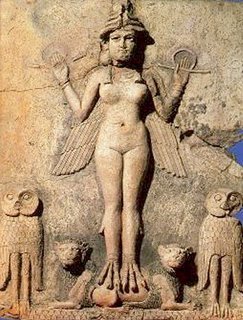Ante Diem IV Nonas Januarias

Modern Date : January 2nd
Ante Diem IV Nonas Januarias
Fourth Day to the Nones of January
This is one of the dies fasti on which legal actions are permitted.
Vitellius was named emperor this day in 69 AD.
This month is sacred to Janus, the god of Beginnings. Janus is the porter of heaven and considered the guardian deity of gates and doors. He is often shown as two-headed since doors face both ways.
Quadrantid Meteor Shower
Quadrantid meteor shower peaks tonight, and is expected to be most intense at 6:00pm UT on 1/3. This very active shower (100 or more meteors per minute) is best viewed in a clear, unlighted place where the relatively faint Quadrantid meteors (average magnitude 2.8) can be seen to best advantage. The Moon was new on Dec. 31, so viewing should be excellent.
Advent of Isis
On this day the Egyptians, and many Romans, would celebrate the Advent of Isis, the Egyptian Mother Goddess. The Advent of Isis from Phoenicia honors Isis’ discovery of that the Ark of Osiris and her return to Egypt. She discovered the Ark by the Mediterranean in the region of Phoenicia.
Although a foreign deity, Isis was honored with a temple at Rome. Professional singers, musicians, and dancers, mostly female, would perform at the temple during this festival. The performance involved actors playing the parts of Isis and Nephthys in the mystery plays celebrating the death and resurrection of Osiris. These were perhaps the oldest mystery plays on earth, predating even those of Mesopotamia.
Birth of Inanna
The Nativity of Our Lady is one of the greatest Sumerian feasts of the year. The birth of Inanna, the princess of heaven and the queen of earth, is commemorated. Both she and Isis were honored today as goddesses of love. They are equivalent to Aphrodite, Astarte, Ishtar, or Cybele.
Handsel Monday
The First Monday of January is called Handsel Monday in Scotland. At one time it was more popular than New Year’s Day itself. Handsel means "a small gift given as an omen of prosperity" either from Old English handselen "giving into the hands (of another)" or from Old Norse handsal "an agreement sealed with a handshake." Over time, the meaning changed from "lucky omen" or "auspicious gift" to "initial payment" or "first taste or experience." Eventually, it came to embody the first taste of Monday each year. Small gifts are exchanged at this time. If debts were paid on this day however, many more would be incurred through the rest of the year.
O-shogatsu
A well-known Japanese proverb says: "New Year's is the key to unlock the year." During the three-day holiday period of the O-shogatsu, everyone but those who run amusement enterprises or are responsible for essential services like transportation enjoys a vacation. For many people, the holiday actually begins around December 29 when all public offices begin their vacations. Others end their work either on the 30th or early on the 31st.
Family members traditionally spend New Year's morning briefly worshiping at home at miniature Buddhist or Shinto altars. Offerings are made to the household gods on a small table, usually consisting of Omochi, dried persimmons, dried chestnuts, pine seeds, black peas, sardines, herring roe, a crayfish, a sea-bream, some dried cuttlefish, Mochibana (flowers made of rice and straw), mandarin oranges, and many other items which vary from district to district.
The custom of Nenshi, paying calls on friends and relatives to greet them on the New Year, is very popular. Holiday greetings are exchanged, and children are presented with Otoshi-Dama, New Year's gifts, usually in the form of money placed in special little envelopes. Otoso, a thick, sweet rice wine, is often served during these visits. New Year's postcards, Nengajo, are also a very popular custom especially for distant friends and acquaintances. Kaizome, the ceremony of the first calligraphic writing drawn with a brush, occurs on January 2nd, as does the tradition of Hatsu-Yume, or first dream.
Children enjoy Tako-age, or kite flying, and girls play Hane-tsuki, known in the West as battledore and shuttlecock. Karuta, a kind of card game, is also popular. The players spread out cards on which pictures and poems, or characters and proverbs, or flowers and months, are illustrated. The object of the game is to pick the correct cards first. In one game, a reader reads the first part of poem while the players search for the card on which the last part is written.

0 Comments:
Post a Comment
<< Home